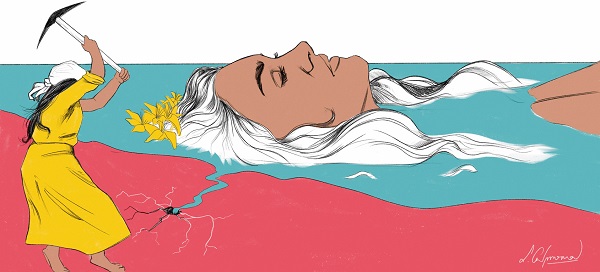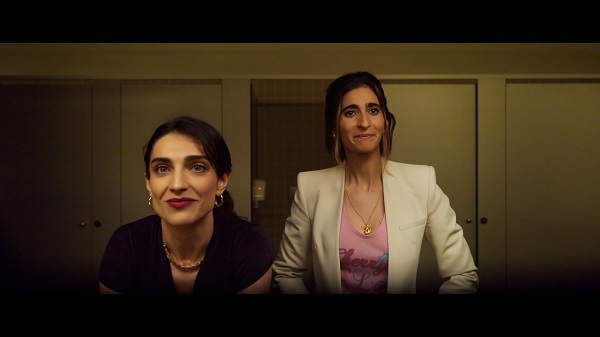
LIVING ROMANI: BETWEEN ARTISTIC BOHEMIA AND LA LIBERTÁ. Lecture. Tania Pardo. 11:15 am–12:15 pm
How many works by Romani artists can be found in the great contemporary art museums’ collections? Questions like this one help us to reflect on the decades-long relationship between the representation of the Romani people in art history and the visibility of their creators. This talk will question the stereotyped view that the fine arts have of the Romani people, which has been perpetuated from the nineteenth century until today. It was an idea that took root at the inception of artistic bohemia, in Romanticism and Realism, which were also crucial in the emergence of the modern movement. Following an undisciplined, impulsive methodology based on self-criticism and a reparative sense, we will trace an arc through the work of different creators whose forms of creation have imitated Romani life, meant as libertarian, against the grain and irremediably wild, while we will also show different works by Romani artists who have used them to raise their voices to show the art of their world.

IMAGES OF THE ROMA BY ROMANI WOMEN CREATORS. Round table. Sandra Carmona (illustrator and editor). Alba Hernández (Romanja Feminist Library). Noelia Cortés (writer). 12:30–2 pm
Due to racism, sexism and classism, when we talk about production of knowledge, both academic and professional, we do not imagine Romani women as people who produce theories and narratives of their own but instead as the subject of study.
This colloquium of Romani women creators aims to subvert these stereotypes through their own artistic and academic creations. Illustrating and narrating from the inside entails creating counter-narratives that dismantle these discourses and showcase the creation of a real identity, history and picture of Romani diversity.
DE-FOLKLORISING THE ROMA IN THE CINEMA. Round table. Isaki Lacuesta (film director), Paloma Zapata (film director) and Pablo Vega (film director). 4–5:15 pm
The stereotypes that art and literature have historically led us to believe about the Roma have continued to be represented since cinema’s early days. The Roma have been presented as a primitive and underdeveloped people who need to be civilised. This primitivism has been used to prompt both laughter and fear in spectators. Back in 1936, in the film Morena Clara based on the play of the same name by Antonio Quintero and Pascual Guillén, a non-Romani man with knowledge of the law attempts to re-educate a Romani woman who participated in the theft of several ham legs in order to turn her into the ideal woman of that period. Seldom has film been used to tell stories from a Romani perspective. We find no films that show the Romani mobilisations in the 1960s calling for access housing in the large cities. When more recent cinema shows images of Romani people that break the historical stereotypes of primitivism, they tend to appear surrounded by a primitive, wild Romani environment that is hinderance to ‘advancing’.
This colloquium space opens up a debate on the Romani image in film based on cinematographic experiments that have attempted to challenge the humour/danger binomial between which Romani image has almost always fluctuated on the big screen.
FILM SCREENING AND COLLOQUIUM WITH THE AUDIENCE. 5:15–7:45 pm

Excerpt from the film La Leyenda del Tiempo [The Legend of Time]. Isaki Lacuesta. 2006. 1 hour 55 minutes.
This is a dramatised documentary that tells the story of Isra, a Romani boy who can never sing again after his father’s death, even though he belongs to a family of cantaores and dreams about one day travelling back to the distant island where he was born.

Short film. Malegro Verte [Glad to See You]. Nüll García. 2023. 15 minutes
Two teenaged friends meet up twenty years later in the bathroom of a shopping centre. One is a successful businesswoman and the other a Romani woman who lives precariously. Their lives have veered far apart since those summers in the village.

Short film. Proud Roma. Pablo Vega. 9 minutes 7 seconds
This is a film inspired by the 1940 film The Great Dictator, created and featuring Charlie Chaplin, who—unbeknownst to many—had Romani blood. The film challenges the dominant historical narratives and negative stereotypes of the Roma, while also recalling the numerous cultural and historical contributions that the Roma have made in Europe over the centuries. Thus, Proud Roma is a contemporary manifesto of the Roma and an homage to their pride and cultural legacy.

ARTISTIC INSTALLATION BREAKING THE FOLKLORE. Cristina Trinidad Jiménez (Reyerta) (illustrator and graphic designer)
The process of creating this installation can be tracked throughout the workshop.
Breaking the Folklore is an immersive installation which challenges the traditional stereotypes associated with the Romani imaginary and proposes a new narrative based on resistance and a contemporary revalorisation. The central piece is a large mural featuring the figure of a Romani woman. Far from the clichés of romantic folklore, the image represents a powerful, challenging woman whose face reflects power, identity and dignity. Her clothing and posture have little to do with traditional representations, symbolising the rupture of the exotic, limiting view historically imposed on Romani women.
Branches of rosemary have been strewn throughout the entire room, a symbol that connects with the land, spirituality and memory of the Romani peoples. With its penetrating scent, rosemary creates an intimate, evocative atmosphere and encourages spectators to reflect on the connection between past and present, tradition and reinvention.